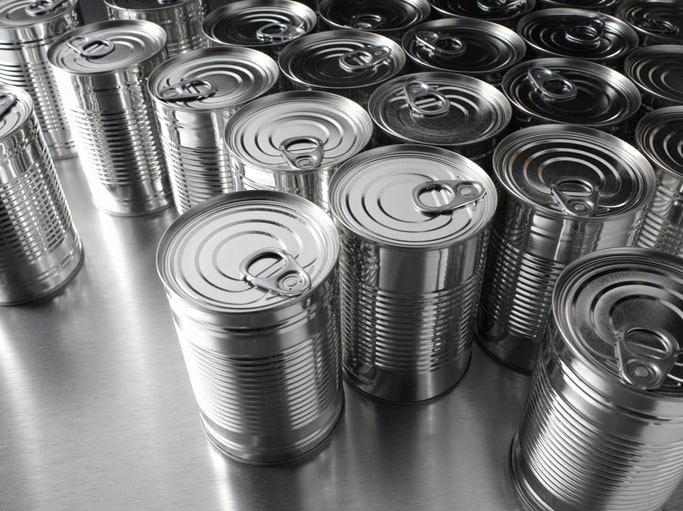 Pinholes and edge cracks compromise the overall quality of sheet metal resulting in downgraded material or scrap. Think about customers in the food industry who request steel containers for food canning applications. The smallest hole can let air in and bacteria to grow, which could spoil the contents and put the end consumer´s health at risk. Certain heat exchanger applications need to isolate reactive substances like volatile liquids, so manufactures need assurances that they have a true barrier without holes. The integrity of the metal sheet is critical to these and other light-tight and airtight containers.
Pinholes and edge cracks compromise the overall quality of sheet metal resulting in downgraded material or scrap. Think about customers in the food industry who request steel containers for food canning applications. The smallest hole can let air in and bacteria to grow, which could spoil the contents and put the end consumer´s health at risk. Certain heat exchanger applications need to isolate reactive substances like volatile liquids, so manufactures need assurances that they have a true barrier without holes. The integrity of the metal sheet is critical to these and other light-tight and airtight containers.
How do pinholes occur? The reduction process of the sheet, as well as pickling (acid wash) can cause pinholes. Pickling is the process when the metal is immersed in an acid solution, usually hydrochloric or sulphuric acid, in order to clean off the mill scale and rust from the surface, and the process can result in small holes.
So how do steel manufacturers and metal providers help ensure there are no pinholes in the sheets they are supplying to customers, and where in the process should they inspect the sheet? Pinholes should be analyzed at the end of the flat sheet rolling process, after the sheet has been reduced to its final thickness. The ultimate place is at the final end of the process line, typically at the exit of a coating line or a slitting line. Remember that if you roll some material, then let it sit outside in the elements, you will need to pickle it to remove the rust, and the pickling process can cause pinholes; so the best analysis position is at the end, right when you are ready to sell the final sheet to someone who will form it into something, like a can or container.
There is pinhole detector technology that provides contactless monitoring of flat sheet to help ensure such defects are caught before the product is shipped out the door. The basic measurement theory is simple. Direct light is shone over the sheet, the light passes through the sheet and onto a photosensitive array, and a photosensor converts the light to an electrical signal – which is then sent to quality control. The direct light is usually generated by a fluorescent lamps, or by the newest (and longer-lasting and energy saving) LCD light. Holes and edge cracks are reported in real-time for the operator and can be printed in an optional report generated after the input of an end-of-coil (or cut) signal from a customer process computer.
Some pinhole detector instruments can detect holes as small as 5 microns on sheet speeds up to 2000 meters per minute. This is critical for food canning applications where the smallest hole can spoil the contents and jeopardize a consumer’s health. Pinholes can be straight or angled through the sheet – thereby emitting more or less light for the sensors. The latest instruments include reflectors to detect light going through angled holes or even edge cracks so they can be identified and included in a fault map so you know exactly where the pinhole is on the strip.
Pinhole detector technology can help ensure that the metal sheet is produced to specification in terms of width, edge quality and integrity. By being able to detect even the smallest pinholes at cold mill line-speeds, metal manufacturers are assured of the integrity of their opaque sheet as it is being rolled and that their shipped product will provide a solid barrier against contaminants for their customers.
Do you know how to choose a metals thickness or coating weight gauging system that will work best for your application? Download the free eBook, A Practical Guide to Metals Gauging Systems.
Additional Resources:
- Download our free eBook: A Practical Guide to Improving Steel Manufacturing Processes and Production Methods
- Visit our center for Improving Steel Manufacturing Processes and Production







Leave a Reply